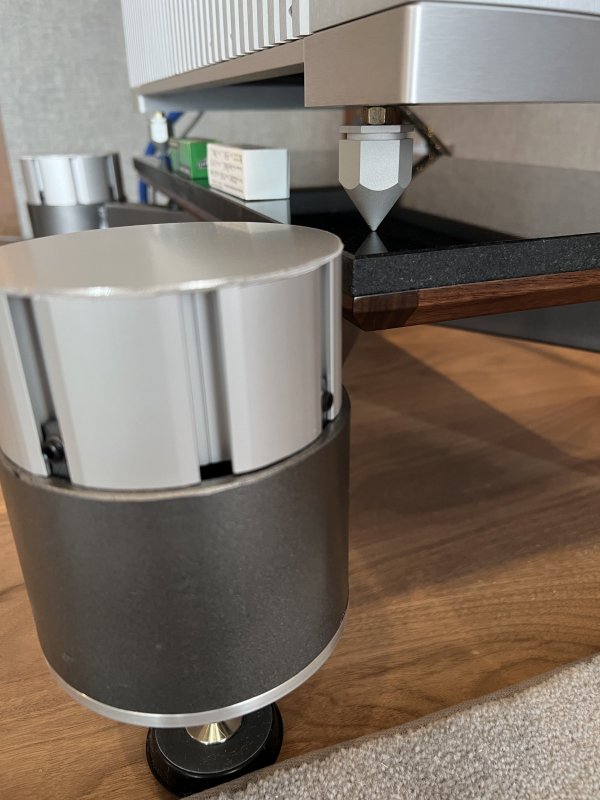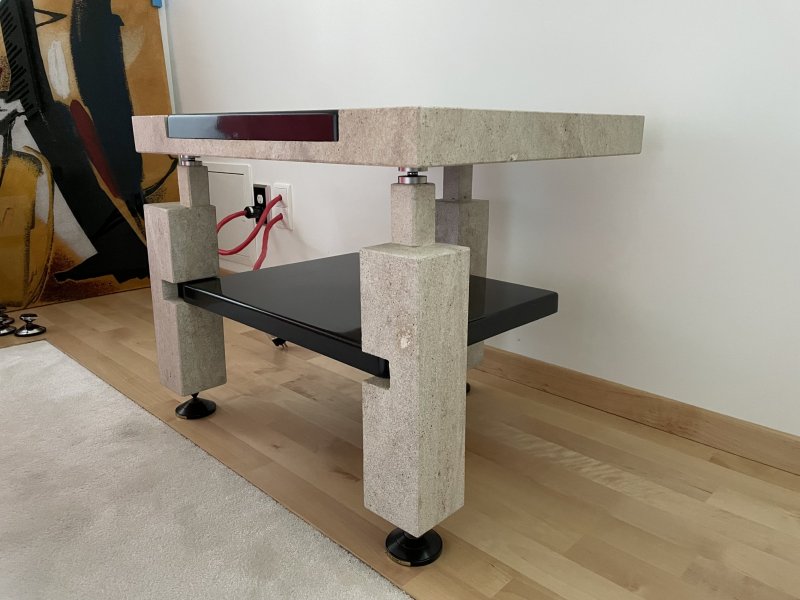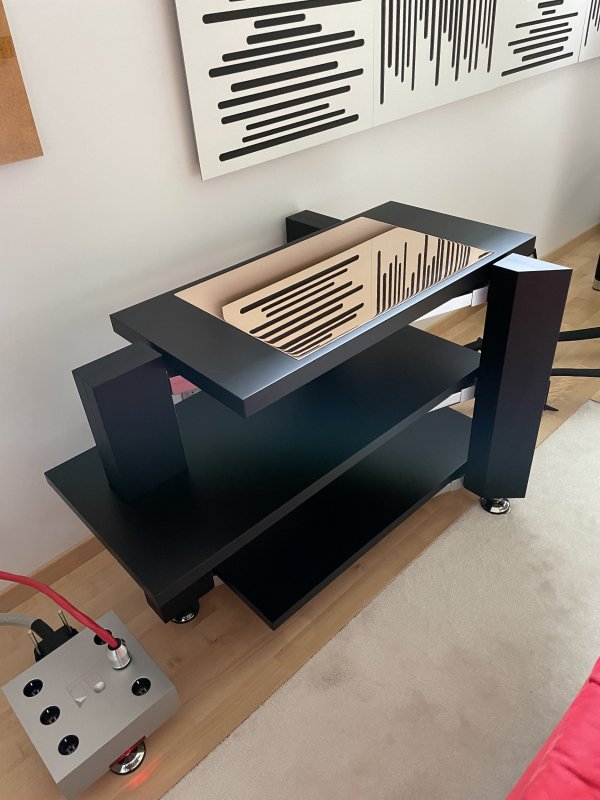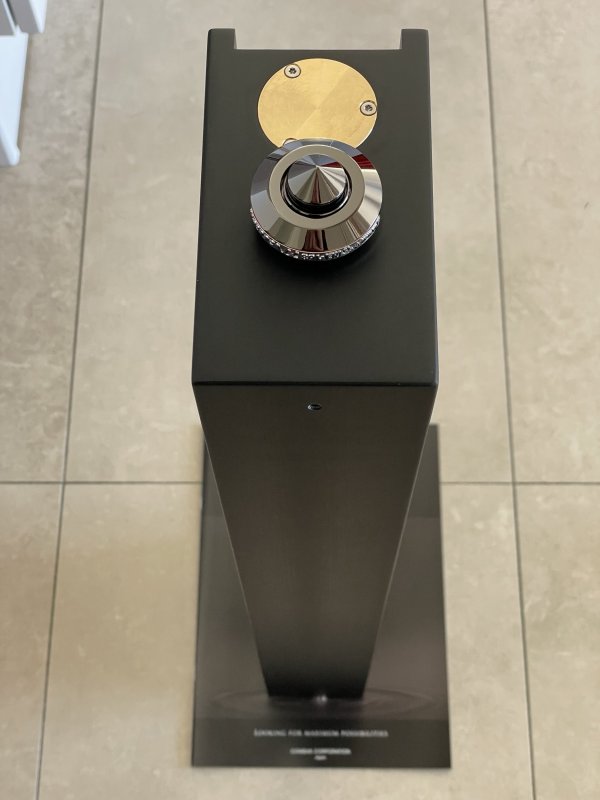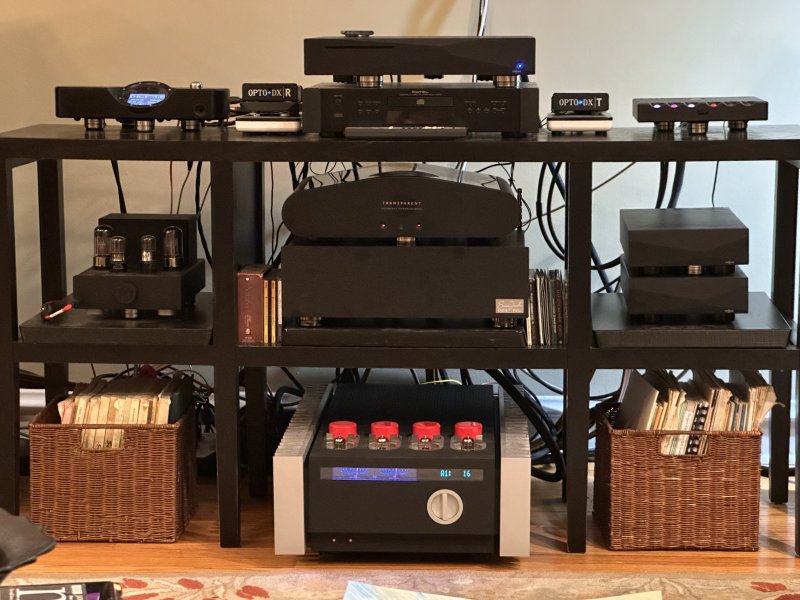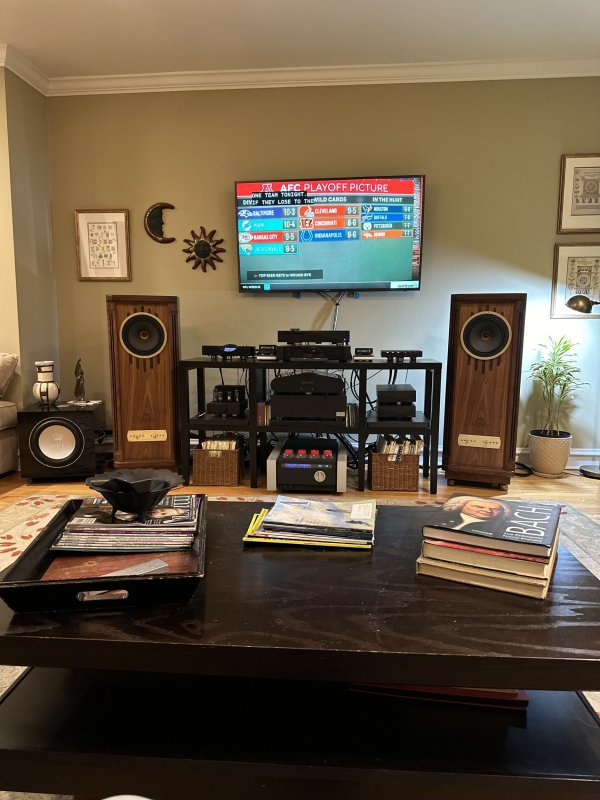The Herbie's Audio Labs "Gliders" are designed to decouple from the floor while providing the convenience of easily moving whatever they support (e.g.,for cleaning). They should be used between your racks/stands and the floor. The Adona platforms are designed to absorb vibrations from the granite top layer into a dissipating layer below which suggests that you should couple your components to the granite with spikes and a simple metal or ebony (if you want a little tuning) spike cup. It follows that if you used a decoupling spike cup/footer on top of the granite you would not be taking advantage of the absorbing/dissipating layer below the granite.Hello!
My VTL amplifiers have spiked feet. Presently the spikes are sitting on Herbie wood slider discs.
View attachment 111068
I am moving the amplifiers to Adona amp stands.
When I move the amplifiers to the Adona amp stands should I place the spiked feet directly onto the granite platform of the amp stands, or should I place the spiked feet onto the Herbie discs which would then sit on the granite platform?
View attachment 111070
So should the spiked feet sit directly on the granite platform, or should they be disintermediated by the Herbie discs?
Thank you!
Last edited:



